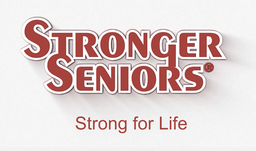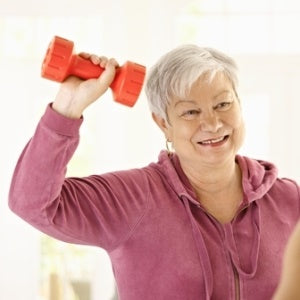Aging is a natural and inherent process in every person’s life. Although many people still associate aging with loss and illness, a new paradigm of the elderly is increasingly being reinvented.
If you are young, know that your choices today will make a big difference in your future health, and if you are elderly and have never thought about taking care of yourself, know that it is never too late to start and reap the benefits of good habits.
The pandemic and social isolation have recently contributed to an increase in physical inactivity and isolated the elderly, many of whom have lost social and family life. Sedentary behavior in the elderly is associated with a significant picture of decline in both physical and mental health, with a decrease in muscle mass and strength, an increase in chronic diseases, and even a higher risk of falling, according to studies.
The main concern with falls in the elderly is that they can cause irreversible damage, disability, or even death. Many elderly people who have had at least one falling episode develop a fear of falling again, creating a vicious cycle of limitation and dependence.
To give you an idea, statistics show that every year, the elderly suffer falls in high number, and age groups appear to influence:
- 25 percent are between the ages of 65 and 74.
- 29 percent are between the ages of 75 and 84.
- 39% of seniors falling are over the age of 85.
The key to healthy aging is keeping the elderly active and independent, not only physically but also mentally. Physical activity is recognized as a preventive strategy for aging-related complications, lowering the risk of falls, injuries, and even the development of chronic diseases.
Many types of exercises are recommended, and Pilates is becoming increasingly popular among the elderly, as it works on all aspects of this population's health, from improving balance, strength, stability, stretching, mobility, to improving motor control and cognitive aspects, demonstrating positive effects in carrying out day-to-day activities with safety and autonomy, and longevity.
Regardless of your age, remember that aging happens every day, every minute. To persuade you to abandon your sedentary lifestyle, I've left six facts about how this modality can help with healthy aging:
1. Cognitive enhancement and reduced risk of depression
Many elderly people develop depression as a result of physical and mental capacity limitations. Pilates exercises require more precise movements and concentration, which improve cognitive and memory function and physiologically increase oxygen transport to the brain.
In addition to releasing hormones such as serotonin, it has been shown to reduce anxiety, improve self-esteem, and stabilize mood. This modality's exercises are still associated with strengthening, mobility, and stretching, resulting in reduced pain and increased mobility and independence.
2. Sleep enhancement
Approximately half of the elderly report sleep problems, which cause fatigue and drowsiness, resulting in a vicious cycle of tiredness associated with a variety of chronic diseases and inactivity.
Pilates research demonstrates a significant improvement in perceived health, motivation, and energy to perform simple everyday tasks that people previously reported being unable to perform.
3. Reduces the likelihood of falling
This method includes exercises that strengthen the "core" muscles, which are in charge of postural alignment and proprioception (body perception in space).
Additionally, anticipatory control, leg strengthening, and physical conditioning exercises can be worked on when well oriented and focused on balance and stability exercises. When movements are performed correctly, studies show changes at the brain level, as well as changes in muscle activation.
4. Social Health
A study found that elderly people who do not have a social life tend to be sedentary and spend less time engaged in physical activity.
Having health professionals who encourage and guide you to engage in physical activity lowers your risk of developing chronic diseases. When there is encouragement and social support, whether from family, friends, or professionals, the entire process of change becomes easier.
5. Muscle strength and endurance are improved
It increases strength, muscle endurance, mobility, and stretching by working all muscles in a coordinated manner. All of these abilities are necessary for anyone suffering from joint diseases such as arthritis or osteoarthritis. Furthermore, it is important to remember that even those who do not yet have a degenerative process will benefit from fighting the disease.
6. Enhances breathing capacity
Most Pilates exercises require breath control, which aligns the breathing pattern with contraction and relaxation movements.
Pilates exercises also work on stretching, mobility, and strengthening of the pectoral, abdominal, and paravertebral muscles, which helps to improve respiratory function by increasing inspiratory and expiratory muscle strength.
Pilates can still provide a plethora of advantages. Immersion in the exercises can be done on a mat, on machines, or in a chair! The professional who will guide and conduct your exercises will be selected based on your goals and profile, as well as whether you will benefit more from an individual and personalized approach or in a group setting more akin to a gym.
The important thing is to always look for locations and trained health professionals before beginning any physical activity, so you can always get medical help to assess your current health status.
References:
– Alvarenga, Guilherme Medeiros de et. al. The influence of inspiratory muscle training combined with the Pilates method on lung function in elderly women: A randomized controlled trial. Clinics (Sao Paulo); 73: e356, 2018.
– Donatoni da Silva, Larissa; Shiel, Agnes; Sheahan, Jerome; McIntosh, Caroline. Six weeks of Pilates improved functional mobility, postural balance and spatiotemporal parameters of gait to decrease the risk of falls in healthy older adults.J Bodyw Mov Ther ; 29: 1-9, 2022
– Fernández-Rodriguez, Rubén et.al. Pilates improves physical performance and decreases risk of falls in older adults: a systematic review and meta-analysis. Physiotherapy; 112: 163-177, 2021



